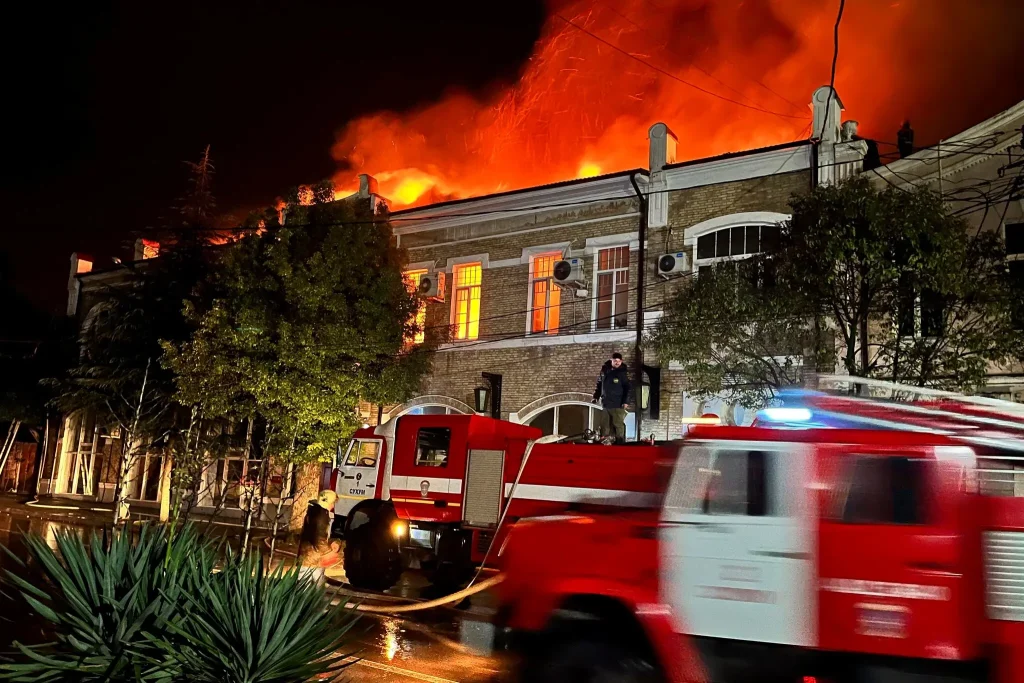A tragic incident unfolded in Abkhazia, a Russian-backed breakaway region of Georgia, as a fire ravaged the National Gallery of Abkhazia, reducing thousands of cherished artworks to ashes. The National Gallery, more storage space than a museum, suffered irreparable losses in a blaze that swept through its exhibition hall in the capital, Sukhumi, early on Sunday.
The Destruction of Abkhazia’s Artistic Heritage
Nearly 4,000 paintings from the National Gallery of Abkhazia, considered a national treasure by locals in this disputed region, were destroyed in the devastating fire. The collection included 300 works by renowned Abkhazian artist and stage designer Aleksandr Chachba-Sharvashidze, a significant figure in the cultural heritage of Abkhazia. Despite residents rushing to the scene to rescue paintings, only 200 artworks could be salvaged from the burning building, leaving a significant void in the region’s artistic legacy.
Investigation and Blame
Local law enforcement officials are investigating the fire, considering all possible causes, including arson. The gallery’s director, Suram Sakaniya, attributed the fire to a short circuit, while authorities are exploring the circumstances leading to the tragic incident. The loss is not only a blow to the cultural identity of Abkhazia but also a setback for the National Gallery, which had long struggled with underfunding and neglect.
Abkhazia’s Complex History and Unfulfilled Promises
Abkhazia, a mountainous region with a population of around 245,000, is internationally recognized as part of Georgia. The region’s status has been disputed since the late 1980s, leading to tensions between ethnic Abkhaz and Georgian populations. After a bloody war of secession in 1994, Abkhazia declared itself a sovereign state. However, the subsequent decades brought crisis, underfunding, and neglect, leaving many of the region’s once-famed resorts abandoned.
Despite promises from local authorities to construct a dedicated building for the National Gallery, where the art could be displayed regularly, it never materialised. The entire collection was crammed into a few rooms at the top of an exhibition hall, ultimately succumbing to the flames that destroyed the building’s roof and the floor housing the artworks.
International Recognition and Geopolitical Tensions
In 2008, following a five-day war with Georgia, Russia recognised Abkhazia as an independent state. Moscow’s establishment of a military base in the region and its influence over Abkhazia’s politics and finances have fuelled tensions. Georgia views Abkhazia as under Russian occupation. President Salome Zourabichvili of Georgia pointed to neglect of cultural identity by both the de facto leadership in Abkhazia and the Russian occupants as contributing factors to the tragic fire.
Conclusion
The destruction of the National Gallery of Abkhazia marks a profound tragedy, not only for the people of Abkhazia but for the broader cultural heritage of the region. As investigations continue, the incident underscores the need for renewed attention to the preservation and promotion of cultural institutions in areas affected by geopolitical conflicts and historical disputes.
Feature image: Firefighters in the city of Sukhumi in Abkhazia, a Russian-backed breakaway region of Georgia, on Sunday.| Courtesy: Robert Dzhpua/Associated Press
Art Fraud Tops List of Concerns for Collectors, Surpassing Travel Damage and Environmental Disasters





